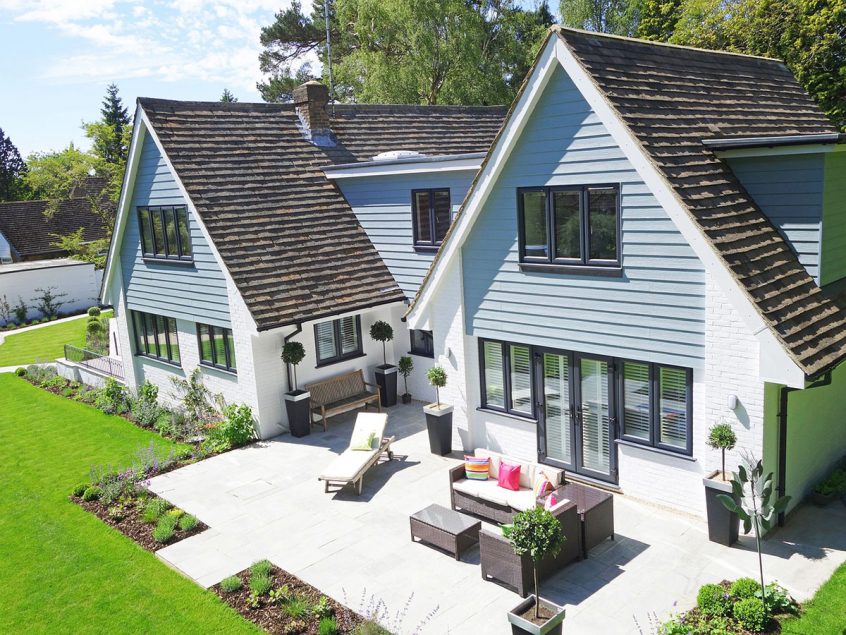A flat roof or a pitched roof? With a terrace or with an attic? Choosing between many possible roof shapes should, then, also depend on whether you want to put your roof to good use, or leave it unutilized.
Offering protection from the weather, a roof is more than just the highest part of a building. At first glance, time spent in considering your roof seems wasted. But in construction, roofs have always been very important. Slovenian architectural history shows that roofs are strongly linked to tradition – not only in the choice of regionally available materials, but also in the choice of different shapes. Today, roofs still express their local identity, although the “regionalism” is, in fact, based on the simple requirement that a roof must successfully withstand different local weather phenomena.
The empty attics of Primorska’s old buildings served as thermal insulation, preventing the ceiling of the below residential space from overheating in summer.
As pitched roofs quickly redirect snow and water away, steeply pitched roofs are typical of Gorenjska and other regions with abundant snowfall. However, in the windy region of Primorska, where the damaging bora wind is known to lift them, roofs are flatter and shingled with heavy stone to prevent the wind suction from raising them.
Nevertheless, with new materials and construction systems, climate conditions are less and less important in the choice of your roof shape. Notwithstanding weather and climate conditions as well as the zoning restrictions of a particular location, the question of roof utilization is quickly becoming the most important factor when deciding on its shape.
The pitched roof and the residential space below
It is easy to recognize a pitched roof. The most frequent pitched roof structure is A-shaped, allowing not only for easier drainage, but also for good utilization of the attic below without having to increase the height of the building or even to build an additional floor. Thus, pitched roofs are particularly advantageous in the event of overcrowding, or in areas where local rules prohibit the construction of buildings above a certain height.
Being a relatively simple construction task, a pitched roof is, therefore, very economical. Also, the space below a pitched roof can be utilized in a number of ways:
• a loft
A family home can be easily transformed into a building with separate flats, offering several generations to coexist in harmony under the same roof. Without major structural overhaul, an unused attic can easily be turned into an apartment.
• working space
Observing the increasing trend of working from home, the space under your roof can be converted into a beautiful office, an atelier, or a studio. You can create your own workspace, a space where you will not be disturbed.
• an additional room
An additional room in the attic provides for more indoor living space and relieves your overcrowding problems. As a rule, efficiently using your attics comes much cheaper than building an addition of similar dimensions on the ground floor. Also, living under the roof offers its own unique emotional note.
• storage
Do you still believe that the junk under your bed will one day be gone? You can gain considerable storage space by utilizing your attic, especially when a basement or a garage are not available options. In the attic, you can store your skis, your Christmas decorations, your tools, as well as garden furniture.
It should not be forgotten that even in rooms that seem less important, a constant indoor temperature is just as necessary. Surely, you want for your stored objects to retain their properties. You do not want to ruin your skis because of summer overheating, or your metallic belongings needlessly rusting away because of condensation, right?
Obviously, the space under your roof can be turned into your favorite place in the whole house – with the necessary condition that it is sufficiently protected from external factors. Indeed, the quality of living under the roof is greatly affected by the roof itself, as this is where heat either enters or leaks out. Just imagine the cold seeping through the roof in winter, and the unbearable heat in summer, if the space can not be effectively cooled. A good thermal insulation against heat is, therefore, a basic functionality requirement when adding an attic to your living space. Read here how to do this.

 +386 7 39 39 510
+386 7 39 39 510 advice@energyshield.biz
advice@energyshield.biz

